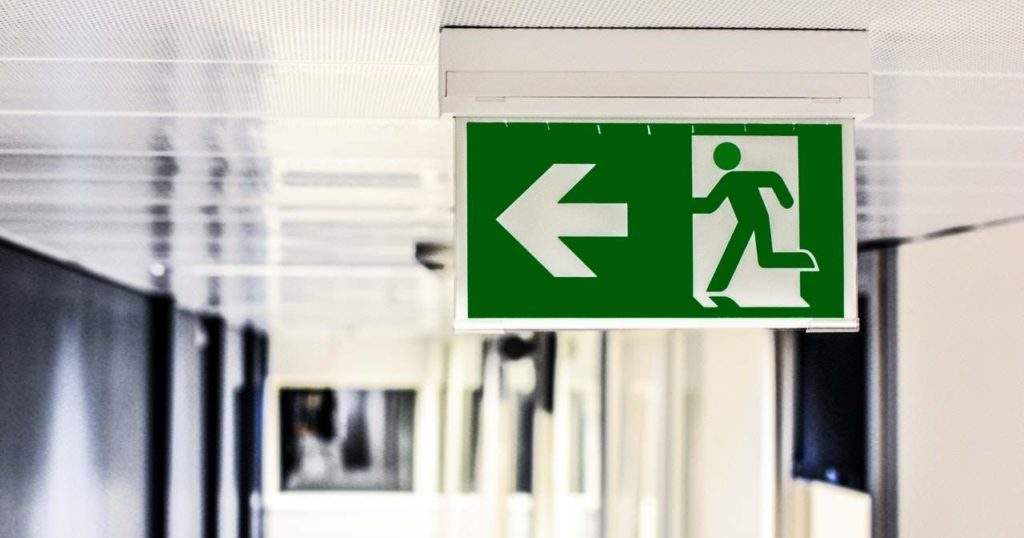Over that last several years, our country has experienced several catastrophes that lead people to flee their homes, often with little notice. Whether the California fires, the Katrina hurricane or some other natural disaster or emergency situation, you must have a plan for safely and quickly evacuating your home with the documents and personal records you need to take care of your family’s business needs. Insurance papers, family documents, even mementos can be quickly lost without advance planning in place.
Let’s face it, nobody wants to live with their things all packed-up, ready to “grab and go” in an emergency; But in the panic of the situation, you may not think clearly enough to grab the vital documents or a treasured item as you are leaving.
Here are five steps that you can take right now that will allow you to prepare in advance for an emergency, and to leave quickly and calmly when the time comes with the items that you want and need in hand.
Step One: Packing-Up Clothes
Pack a tote or small overnight bag with a change of clothes for each family member. Select simple items (shirt, pants, underwear, and socks) and include a sweater or light jacket, and a comfortable pair of old shoes for each person.
Keep this bag in the trunk of your car. Knowing that you already have a change of clothes tucked away will allow you to focus on gathering those important documents and items when the time is short.
Rotate the clothing every six months to keep the clothes fresh and to have selections that match the season’s weather. If you have children in diapers, keep an unopened package of diapers and wipes in the trunk.
Step Two: Packing-Up Food and Other Supplies
Order a 3-day emergency supply kit that contains food and water for the number of people in your family for up to three days (Search google to find them). You can also make your own kit by getting one of those plastic containers with a lid and handle and filling it with the supplies of your choice.
Items such as powdered milk, dry cereal, crackers, peanut butter, honey, and pop-top cans of tuna along with paper and plastic cups, plates, napkins, and utensils store well and need no special preparations to consume. Customize your food items to suit your family’s taste.
You can keep the container in the utility room, laundry room or garage, ready to grab, or you can keep it in the trunk of the car. Rotate the food items every six months. Consider keeping a case of water in the car (Many people already do this just to have drinking water handy).
Step Three: Get Your Personal Records and Vital Documents Organized
This includes everything from policy numbers and contact information to credit cards, health insurance, wills and other policies and vital documents. You’ll also need the contact information for every provider that you use for family business. Use a system that allows you to get everything organized now and then simply “pick it up and go” in an emergency.
The peace of mind that you will experience just knowing that in an emergency you can simply pick up your things and leave is invaluable. Having the documents you need avoids the panic of trying to think of everything at the moment, and the heartbreak of financial loss when you don’t have the documents to prove your claims or to take the other necessary actions to protect your family’s welfare.
Step Four: Dealing with Items You Can’t Afford to Lose
Now that you have the basics covered (Food, clothing, and vital documents), you can turn your attention to the mementos and other precious items that you don’t want to lose or forget in an emergency.
Get your tablet and do a walk-through of your home. Identify the items you will want should everything else be lost. Make your selections from the standpoint of items you cannot replace (Photos, letters) and special, small items you don’t want to have to purchase again or whose loss would create problems (A laptop). Note that we are talking about a few portable items here, not furniture or heavy objects.
Keep your list short and focused on precious items and mementos (A treasured clock, heirloom jewelry, etc.) or essentials, not replaceable items of no real importance.
Make a list of these items by room.
Step Five: Purchase Large Zip-Lock Style Bags
Sold at Lowes and Home Depot — not the grocery store. These oversized bags feature a double-zipper seal, handles, and heavy-duty plastic with a pleated bottom. They hold an enormous amount and the contents can be viewed through the plastic. In addition, you can write notes on the outside.
Keep these bags along with your list in one place, ready to grab and fill as you walk to each room to collect the item you want to take.
When you are faced with an emergency evacuation, you won’t have to run from room to room frantically trying to make decisions. You will be able to calmly enter the room with your list and your zip-lock bag, pick up the treasured item, place it in the bag and move to the next room.
With your overnight bag and 3-day emergency supply kit already prepared and in the car, all you will need to do is pick up your things from the mementos from each room and get in your car and leave.
You will have with you your important family records and vital documents, your treasured mementos, a change of clothing, and food supplies for up to three days. Having such complete records will make it easier to prove any claims and to get things “back to normal” for your family as quickly as possible.
If you require any legal aid thereafter, we are here to help you!

